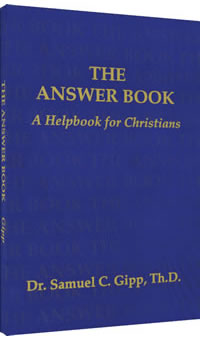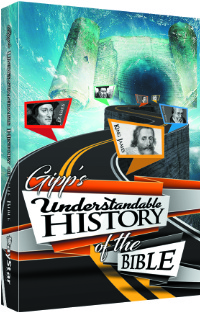Textual History of the Bible
Many Christians are completely unaware that modern Bible versions differ from the King James Bible in a way they never expected … they are not translated from the same Bible text!
The "Received Text"
Down through history, long before the advent of the printing press, men made
copies of the Scriptures by hand. However, they did not all do so with the
same attitude toward the Scriptures. Many made their copies with a sense
of spiritual awe, not daring to change a word, because it was the Word of God.
Archaeologists have found thousands of these copies from all over the ancient
world, and been amazed at how they agree! Truly God did preserve His Word in
His church. The text they give us is often called by one of the following
names:
Textus Receptus (Latin for "Received Text")
Byzantine Text - because of the part of the world in which we find it
Antiochan Text - the church at Antioch used it
The "Alexandrian Text"
However in Alexandria, Egypt, a group of "scholars" thought they could
do better. When they made their copies, they made "corrections" that
they thought better presented what the Scriptures should say. Some of their
errors were gross blunders (like quoting Malachi and calling it Isaiah) but
others were more subtle (slight word changes to take away the deity of
Christ). They removed verses they didn't like. The Alexandrian copyists
had one more characteristic … they couldn't agree with each other! Their
copies differ not only from the vast majority of existing Scripture texts,
but even from each other. A very small number of these manuscripts exist
today. This is called the Alexandrian Text.
Choosing which text to use
All of our existing copies come from one of the two textual streams
described above. We call them "streams" because they are made of copies
made from copies. By comparing them and noting their differences, it is
easy to determine from which stream each copy came.
Honest scholars understood that if God really kept His promise to preserve His Word, then we would expect to find copies all over the church at large that agree. Sure enough, they found that 95% of all existing copies agreed, coming from the Antiochan (or Byzantine) text, so it was clear that the Received Text, based upon these agreeing copies all over the ancient church, was the correct one. This is the text used by Luther, Tyndale, Calvin, Matthews, Coverdale. When King James commissioned his famous English Bible translation, the scholars naturally used this Received Text.
Not everyone believed God kept His promise
In the mid nineteenth century, two scholars came along who helped to change
everything. Their names were Fenton John Anthony Hort and Brook Foss
Westcott. From their personal correspondence, it is clear that Hort and
Westcott did not hold a faith comparable to that held by millions of
evangelical Christians today. Dr. Samuel C. Gipp, Th.D., writes:
"It cannot be said that they believed that one could attain Heaven by either works or faith, since both believed that Heaven existed only in the mind of man.
Westcott believed in and attempted to practice a form of Communism whose ultimate goal was communal living on college campus's which he called a "coenobium. "
Both believed it possible to communicate with the dead and made many attempts to do just that through a society which they organized and entitled "The Ghostly Guild."
Westcott accepted and promoted prayers for the dead. Both were admirers of Mary (Westcott going so far as to call his wife Sarah, "Mary"),and Hort was an admirer and proponent of Darwin and his theory of evolution.
It is obvious to even a casual observer why they were well equipped to guide the Revision Committee of 1871-1881 away from God's Antiochian text and into the spell of Alexandria."
From "The Answer Book" by Samuel Gipp
Gaining positions on the committee to "revise" the King James Bible, Hort and Westcott persuaded the committee to abandon the Received Text which had been preserved by the ancient church. Instead, the committee was convinced to use the Alexandrian text, provided by the Roman Catholic Church who had preserved it. They accepted the notion that God had not preserved His Word in the ancient Church, but had instead entrusted it to the hand of the Roman Catholic Church, the organization which had hunted and slaughtered Christians who dared possess their own copy of God's Word!
Is this any way to translate a Bible?
Having sold the Alexandrian text to the revision committee, Hort and
Westcott became the gurus of Bible texts. The translators often faced
an impossible problem. Having abandoned the broad evidence of history,
throwing out 95% of the available copies, they had to decide exactly what
each verse should say based upon only 5% of the available evidence.
And there was the problem. These few texts could not even agree with each
other! How do you decide which is correct?
Enter Hort and Westcott. They decided what the text should say, and the committee dutifully translated it. So instead of the authority of the Bible text coming from the broad evidence of history, it was coming from the intellect of two respected scholars. God doesn't do things that way. A study of the lives and theology of these two men helps explain why their biblical text began to have holes in it … verses were missing!
It's a simple choice
All modern Bible versions are based upon the work of Hort and Westcott,
using the corrupt Alexandrian text. The King James Bible is based upon
the Received Text. If you believe that God allowed his Word to be hidden
from the church for centuries, only to be revealed much later by the
Roman Catholic Church, you will want a modern Bible based upon the
Alexandrian text.
If you believe that God preserved His Word in His church, throughout the centuries, you will want a King James Bible, based upon the historical Received Text. The choice is yours.
- See more articles on related topics:
- Bible Versions
- King James Bible
- Modern Versions
- Two Types of Bible Versions
- History of Preservation
More on Bible Versions:
Products of interest:
-

Answer Book, The
165 pages
Over 60 of the most commonly asked questions about Bible versions are answered in an easily understood style. -

Understandable History of the Bible
557 pages
You'll learn the history of the Bible in this well-documented but easy-to-understand book. -

Did the Catholic Church Give Us the Bible?
208 pages
The Bible has two histories. One is of God preserving His words through His people. The other is of the devil using Roman Catholic "scholars" to pervert God’s words and give us corrupt modern Bibles. -

Did Jesus Use the Septuagint?
112 pages
They're saying Jesus used the Septuagint. But what they really want is to add something to your Bible.
